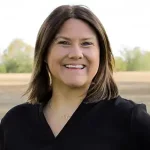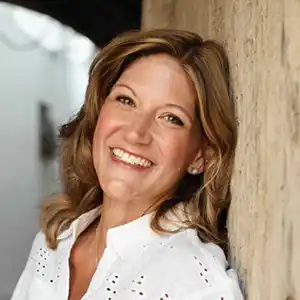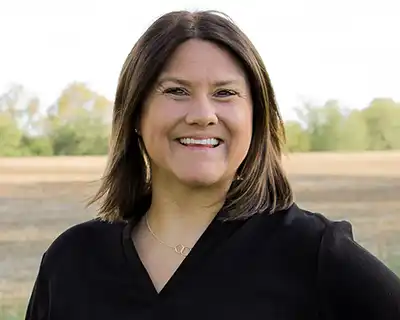Ducks Unlimited and Trust In Food Say “Follow the Farmer” in Latest Podcast
The 2022 Census of Agriculture, released in February of this year, paints a stark contrast between those who work every day to feed, clothe and fuel the world and those who directly benefit from the practice.
“The Census shows a dip below 2% of Americans that are involved in agriculture, which represents a loss of farmland and ranchland in the U.S.,” said Trust In Food President Amy Skoczlas Cole during a recent appearance on the DU Podcast, produced by Ducks Unlimited. “We now have fewer family farms in the U.S. than we did five years ago and about 20 million acres that have come out of production agriculture.”
“When we think about the fact that what agriculture does is both feed us and cloth us and fuel us, but it also creates the habitat for not only waterfowl but all biodiversity, we see that we are headed in directions that are not great for ducks but also not great for Americans writ large.”
On his family farm and ranch in Oklahoma, Trust In Food Senior Vice-President Jimmy Emmons is feeling the trickle-down effects of this squeeze in a variety of ways.
“Early on in agriculture, the more hours you put in, the more money you could make,” he told podcast host Dr. Mike Brasher. “Today, in regenerative ag especially, we are trying to plan out 4 and 5 years in front of us. We have to manage rising costs. We’ve had to do more with less. There are a lot of strategies in play with huge management decisions to make.”
“At the end of the day, we have to pay the bank and we have to pay ourselves. It has become very challenging in the last few years to manage all of that and still think about how our footprint is changing our land.”
Following the Water
Skoczlas Cole and Emmons came together to discuss these challenging times with Ducks Unlimited Director of Agriculture and Strategic Partnerships Billy Gascoigne. The partnership that has forged between Farm Journal’s intelligence and conservation programs and Ducks Unlimited sits at the intersection of these challenges and aims to bring both place-based and producer-led solutions to the issues at hand.
For Gascoigne, the path that led him to form partnerships with agriculture to grow his organization’s wetlands and waterfowl conservation impact was simple – instead of following the money, he simply followed the water.
“For a long time, Ducks Unlimited focused directly in the wetlands footprint, but over time, we started to see impacts from water quality issues like nitrate sediment,” he said. “Because water flows downhill, we instituted edge of field programs to try to intercept some of those nutrients for the betterment of wetland habitat.”
“Now we see the opportunity to lean on our technical capacity and the ability to meet farmers with the needs they have identified to help improve, directly, practices that are happening in the field. To me, it makes complete sense that if we can get ahead of that sedimentation and nitrogen runoff from that field practice that may impact a downstream wetland, why wouldn’t we be working at all levels of that watershed?”
Following the Farmer
To target farmers who are most likely to implement change in their operations, Gascoigne turned to Trust In Food, who utilizes Farm Journal’s intelligence and farmer trust to convene collaborative value-chain programs such as America’s Conservation Ag Movement and Trust In Beef. Cementing those relationships even further, the two organizations are now partners in implementation of a $40 million coalition-driven grant that is part of the Partnerships for Climate-Smart Commodities Grants.
“We as producers have always known if you take care of your animals and your land, they will take care of you, but how do we get to the next level?” said Emmons. “Are we truly doing all we can do? Probably not, as a whole.”
“The opportunities we have through programs like these are the greatest that we’ve ever had.”
“It takes us all to be successful. What an opportunity to be here and what a great team we are putting behind that to really assist producers to understand how to get to the next level.”
At Trust In Food, the critical ingredient to that equation is the farmer. Working from a farmer-centered approach, Skoczlas Cole said, is key, but also not where many past efforts have originated.
“One of the things we can do at Trust In Food, because Farm Journal reaches every producer in the U.S. and because we understand what their lived experiences look like, we can help groups like DU understand the categories of barriers and challenges that producers face, what they look like from region to region and we can also get underneath some of those to see what are the core drivers.”
“By being able to dimensionalize that and then make very practical actionable recommendations of helping producers understand and find value in making the change, we can help partner organizations understand how to meet that specific producer in their region with their challenges.”
“I’d like to think we are really the ground truth organization because we are showing up with programs that actually meet the actual need and not something that someone outside of the ag system imagined the need to be. It’s better for producers because they are getting what really works and it’s better for our partners because they are able to use their resources more efficiently.”
Following the Success
For a partner organization like Ducks Unlimited, Gascoigne says, the relationship is a win-win that allows him to stack more wins on top.
“DU is never in a position where we trying to tell a farmer how to farm or a rancher how to ranch,” he said. “There are principles we believe in, but ultimately we are trying to build partnerships and resources available to help them make decisions that they feel are best for their operations.”
“To find those win-wins, at the end of the day, we have to know exactly what it is they need, then we can build a program to meet those needs.”
Learn more about the partnership and how it is using producer-centered outreach to accelerate conservation by listening to DU Podcast: Episode 562.
Learn more about the Connected Ag Project and what opportunities are available to American farmers, by visiting TrustInFood.com/Grow.



